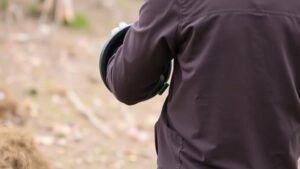Detecting Along Historical Fur Trade Routes for Lost Tools and Artifacts
Detecting Along Historical Fur Trade Routes for Lost Tools and Artifacts
The fur trade in North America was a complex network of exchange that significantly shaped the economic and cultural landscapes of indigenous populations and European settlers alike. Historical routes traversed vast territories, connecting trade posts and facilitating the movement of goods. Detecting lost tools and artifacts along these routes provides important insights into the past, revealing not only the technology and culture of the time but also the interaction and adaptation of diverse communities. This article examines the methodologies, challenges, and significance of archaeological exploration along historical fur trade routes.
The Historical Context of the Fur Trade
The fur trade primarily flourished from the 16th to the 19th century, with significant involvement from various indigenous tribes, European explorers, and traders. The establishment of trading posts such as Fort Vancouver and Fort Detroit led to the formation of extensive trade networks. Fur-bearing animal populations, particularly beavers, were extensively hunted, fueling both local economies and international trade markets. This period, marked by exploration and migration, had profound implications for indigenous communities, including shifts in trade dynamics, cultural exchanges, and sometimes violent confrontations.
Tools and Artifacts of the Fur Trade
Artifacts recovered from historical fur trade routes provide a tangible connection to this era. Commonly found tools include:
- Metal traps used for catching animals.
- Fishing gear such as hooks and nets.
- Cooking implements like pots and utensils.
- Trade goods, including beads, firearms, and textiles.
Each of these items offers clues about the trade practices, lifestyles, and interactions of various groups. For example, the presence of European metal tools frequently replaced indigenous tools made from bone or stone, illustrating a significant shift in manufacturing practices and resource availability.
Methodologies for Detection
Detecting artifacts along historical fur trade routes incorporates a combination of traditional archaeological techniques and modern technology.
Field Surveys
Field surveys are foundational to artifact detection. Archaeologists employ systematic sampling methods, which involve:
- Creating a grid system over the survey area to ensure comprehensive coverage.
- Conducting visual inspections and shovel tests to uncover artifacts beneath the surface.
For example, a survey conducted along the old Hudson Bay Company routes in Manitoba revealed hundreds of artifacts, shedding light on the dominance of specific trade goods during different periods.
Remote Sensing Technologies
Remote sensing technologies, such as ground-penetrating radar (GPR) and aerial imaging, are increasingly being utilized to detect subsurface artifacts. GPR can effectively identify anomalies in soil composition, which may indicate buried items. Recent projects, such as those conducted by the University of Alberta, utilized GPR to locate potential trading post sites along the North Saskatchewan River, leading to discoveries that informed understanding of trade relationships between indigenous groups and Euro-Canadian settlers.
Challenges of Artifact Detection
Detecting artifacts along historical fur trade routes presents several challenges, including:
- Environmental factors that impact artifact preservation, such as soil acidity and moisture levels.
- Legal and ethical considerations regarding land access and indigenous rights.
- The potential for artifacts to be disturbed or completely removed by natural erosion or human activity.
A case in point can be seen in the challenges faced by archaeologists in Canada, where landscapes have been altered by agriculture and urban development, complicating artifact recovery and interpretation.
Significance of Findings
The findings from detections along fur trade routes have far-reaching implications. provide valuable data for understanding the economic strategies of indigenous communities and their adaptations to European contact, as well as insights into trade networks and the diffusion of goods. For example, artifacts found along the Rocky Mountain routes have shown the gradual increase of European-made goods among indigenous populations, marking a profound transformation in traditional practices.
Case Studies of Successful Detectives
Several successful archaeological projects illustrate the potential for discovering lost tools and artifacts along historical fur trade routes. One notable example is the excavations at Fort Michilimackinac in Michigan. Archaeologists unearthed a variety of artifacts, including tools and trade items that offer an in-depth look at the lifestyle during the height of the fur trade. Similarly, the ongoing efforts at various Hudsons Bay Company trading posts continue to yield significant finds that enhance understanding of the regions economic history.
Actionable Takeaways
For those interested in further exploring the realm of archaeological detection along fur trade routes, the following steps are advisable:
- Engage with local archaeological organizations to learn about ongoing projects and volunteer opportunities.
- Stay informed on the ethical considerations of artifact recovery and preservation.
- Use modern technology and methodologies to enhance fieldwork efficacy.
Understanding the historical context of these trade routes not only enriches our knowledge of North American history but also honors the cultural significance of both the indigenous peoples and European settlers involved in this transformative era.

